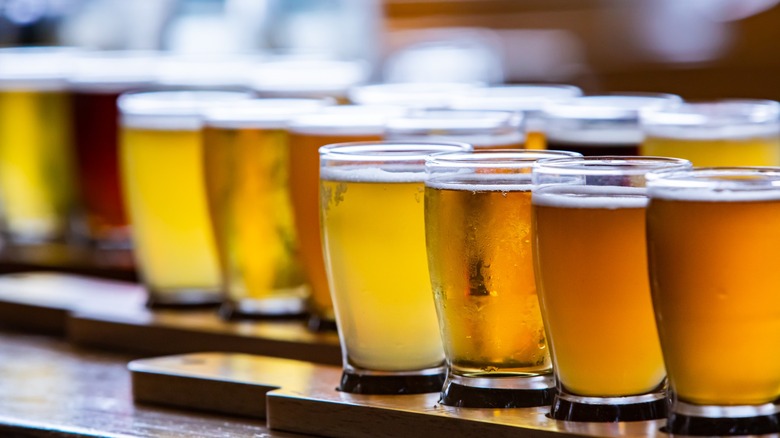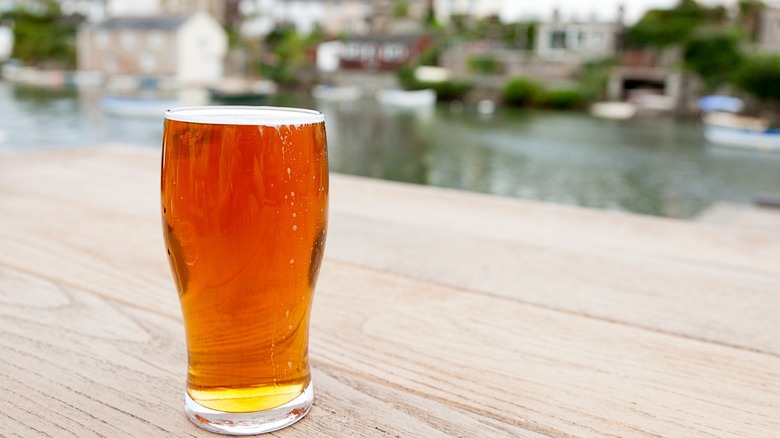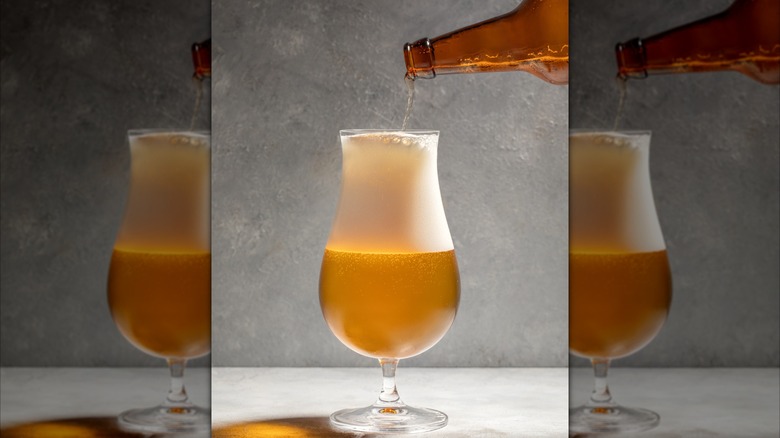What Makes Scotch Ale Different From Scottish Ale?
To put things lightly, there's no shortage of beers to choose from these days. Whether you're shopping around for new unique brews to sample or you're searching for that perfect stout to ring in the holidays, you'd be forgiven for feeling inundated with names and terms to the point where it's hard to distinguish one beer from another. This issue can become especially present when you've got a Scotch ale in one hand and a Scottish ale in the other. What's the difference? Is there a difference? While the answers aren't entirely clarifying, they'll shed some light on this conundrum.
In very basic terms, "Scotch ale" and "Scottish ale" meant the same thing at one point in time, but nowadays the label of "Scotch ale" tends to denote a stronger beer whereas "Scottish ale" tends to be given to more session-able ales of the same family. These are typically made in their namesake region, Scotland, but not always. If you see "Scotch-style ale" written on your beer's vessel, you can bet that it's from another region — usually the United States.
Two different beers from the same family
While Scotch ales and Scottish ales can usually be differentiated by their strength, they're essentially cousins in the same larger beer family. Specifically, as their names imply, both of these beers are ales. One of the markers for an ale is the yeast that it uses -– in this case, that's the rather aptly named ale yeast. Ales are also top-fermented due to this yeast rising during fermentation, and they're fermented at (or near) room temperature. These are all big distinctions between what makes an ale and, say, a lager, and shows that while Scotch and Scottish ales are certainly different, they share the same overall classification.
Scotch ale and Scottish ale aren't the only beers in this ale subgroup. You can also find a wee heavy ale. This is essentially a version of a Scotch ale that's typically stronger and much more malty. Though you could argue that wee heavy and Scotch ale are the same, they're generally different enough to warrant a distinction, especially in their native Scotland.
How to drink Scotch and Scottish ales
Your glass plays a role when serving ale, and with both Scotch and Scottish ale, this is no different. Normal convention states that a tulip glass is a good bet for an all-rounder ale glass, and this will serve you perfectly well in this case, too. But, traditionally, ales of Scotland go hand in hand with the thistle glass. It's not too dissimilar from a tulip glass but has a skinnier profile and a round, bulbous base. If you can't get your hands on one, a tulip glass will definitely suffice. For those wanting to get in on the authentic experience, the thistle glass is your way to go.
Once you've got your ale poured up, you might want a little food to accompany it. For the relatively weaker but still flavorful Scottish ales, salty fare, such as pretzels or chips, as well as satisfying comfort foods like mac and cheese, are the perfect partners. Meanwhile, the heavier, more robust Scotch ales work well with savory dishes, such as root vegetables and roasted poultry, and can also work alongside strong cheeses and meats in a decadent charcuterie. Whatever food and ale you choose, you'll get a full helping of flavor.


